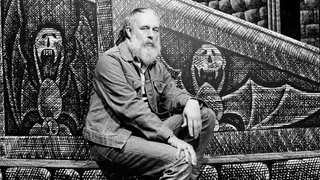June 1, 2015
Holiday in Socialist Fairyland? N. Korea Woos Tourists
Matthew Wexler READ TIME: 4 MIN.
If you're still looking for somewhere exotic to go this summer and don't mind a vacation that comes with a heavy dose of socialist propaganda and leader worship, North Korea says it's just the place for you.
Fresh off a drastic, half-year ban that closed North Korea's doors to virtually all foreigners over fears they would spread the Ebola virus - despite the fact that there were no cases of Ebola reported anywhere in Asia - the country is once again determined to show off its "socialist fairyland" to tourists.
The focus on tourism is the blessing of Kim Jong Un himself and, in typical fashion, officials have set lofty goals in their effort to please their leader.
About 100,000 tourists came to North Korea last year, all but a few thousand of them from neighboring China.
Kim Sang Hak, a senior economist at the influential Academy of Social Sciences, told The Associated Press the North hopes that by around 2017, there will be 10 times as many tourists and that the number will hit 2 million by 2020.
Pyongyang's interest in attracting tourists may sound ironic, or even contradictory, for a country that has taken extreme measures to remain sheltered from the outside world.
But Kim said the push, formally endorsed by Kim Jong Un in March 2013, is seen as both a potentially lucrative revenue stream and a means of countering stereotypes of the country as starving, backward and relentlessly bleak.
"Tourism can produce a lot of profit relative to the investment required, so that's why our country is putting priority on it," he said in a recent interview in Pyongyang, adding that along with scenic mountains, secluded beaches and a seemingly endless array of monuments and museums, the North has another ace up its sleeve - the image that it is simply unlike anywhere else on Earth.
"Many people in foreign countries think in a wrong way about our country," Kim said, brushing aside criticisms of its human rights record, lack of freedoms and problems with hunger in the countryside. "Though the economic sanctions of the U.S. imperialists are increasing, we are developing our economy. So I think many people are curious about our country."
Opponents in the West say tourists who go to North Korea are helping to fill the coffers of a rogue regime and harming efforts to isolate and pressure Pyongyang to abandon its nuclear weapons and improve its human rights record. For safety reasons, the State Department strongly advises U.S. citizens not to travel to North Korea.
None of that has stopped the number of American and European tourists from gradually increasing, and such concerns are not so strong in the countries North Korea is most actively wooing - China, Russia and Southeast Asia.
"About 80 percent of the tourists who come are from neighboring countries," said state tourism official Kim Yong Il. "It's normal to develop tourism within your region, so our country is not exceptional in that way. But we are also expanding to European countries as well."
While the overall quality of life in North Korea hasn't shifted much in the past few years, efforts to build attractions for visitors and the infrastructure required to host them are already beginning to change the face of the capital and some scattered special tourism zones recently established across the country.
Amid the generally Spartan context of their surroundings, those attractions, which are also used by average North Koreans at much lower fees, can be quite striking.
In Pyongyang, some of the more popular tourist sites include a new, high-tech shooting range, where visitors can hunt animated tigers with laser guns or use live ammo to bag real pheasants, which can be prepared to eat right there on the spot. There is also a new equestrian center, a huge water park and revamped "fun fairs" replete with roller coasters, fast-food stands and a 5-D theater. After a year of feverish construction, Pyongyang's new international airport terminal could open as soon as next month.
Outside of the showcase capital, where funds, electricity and adequate lodging are much scarcer, development has been focused on the area around Mount Kumgang and Wonsan, a port city on the east coast.
A luxury ski resort was recently opened just outside of Wonsan and a number of new restaurants have sprung up along the city's beachfront area, which is popular with tourists and locals alike for swimming, clambakes and outdoor barbeques.
But like everything else, North Korea is approaching tourism "in its own way."
Tourists of any nationality can expect constant monitoring from ever-watchful guides and a lot of visits to model hospitals, schools and farms, along with well-staged events intended to impress and promote Pyongyang's unique brand of authoritarian socialism. Like all other visitors to the North, they have precious few opportunities to interact with average people or observe their daily lifestyle.
Tourists can also expect severe repercussions if they step out of line.
Tours to Mount Kumgang by South Koreans were quite popular for about a decade until 2008, when they were halted after a South Korean housewife who walked into a restricted area was shot dead by a North Korean guard. More recently, an American tourist who impulsively left a Bible in a provincial nightclub was detained for nearly six months until the Pentagon sent a plane to Pyongyang to pick him up.
Matthew Wexler is EDGE's Senior Editor, Features & Branded Content. More of his writing can be found at www.wexlerwrites.com. Follow him on Twitter and Instagram at @wexlerwrites.






